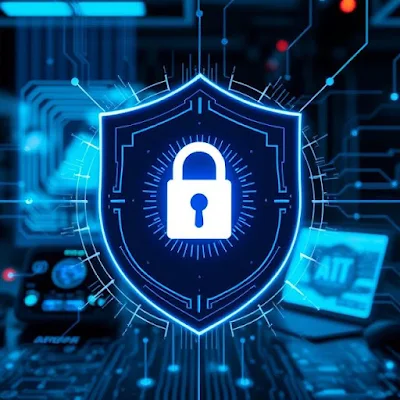Cybersecurity in 2025: How AI and Gadgets Are Defending Our Digital Lives

In 2025, cybersecurity is no longer a concern for IT departments alone—it’s become a personal responsibility for every digital citizen. With smart devices in every room and AI systems guiding everything from shopping to health monitoring, our digital lives are deeply integrated with our physical world. That makes us all more vulnerable—and more dependent on advanced protection strategies.
The Expanding Digital Attack Surface
From smart thermostats to digital assistants and connected refrigerators, today’s homes are packed with Internet of Things (IoT) gadgets. While these devices enhance convenience, they also open doors to hackers. Each connection, if unprotected, is a possible breach point. In 2025, the average household has 27 connected devices—each one needing its own layer of defense.
Top Cyber Threats in 2025
- AI-Driven Phishing: Hackers now use generative AI to craft personalized, convincing messages, mimicking human speech and tone better than ever.
- Deepfake Exploits: Synthetic voice and video are being used to trick voice-activated security, bank verifications, and even biometric systems.
- Smart Device Hijacking: Gadgets like smart locks or baby monitors can be remotely accessed and manipulated if security protocols are outdated.
- Supply Chain Attacks: Malware now often comes pre-installed via compromised components in hardware supply chains.
How AI is Changing Cybersecurity for the Better
Fortunately, AI is also on the side of defense. AI-based cybersecurity systems in 2025 offer real-time anomaly detection, zero-day threat protection, and autonomous response mechanisms that can isolate affected systems before damage spreads.
Smart firewalls now use behavioral modeling to identify suspicious behavior—even if it’s never been seen before. Instead of waiting for virus signatures, systems are proactive, not reactive. This shift has dramatically reduced the success rate of ransomware and spyware attacks in business networks and personal gadgets alike.
Gadgets That Protect You
1. Sentinel Key
This portable biometric token acts as a physical key for all your digital accounts. It combines fingerprint scanning, face unlock, and two-factor verification into a palm-sized device that connects via NFC and Bluetooth. It eliminates the need for passwords and is immune to phishing.
2. SmartShield Router Pro
No ordinary Wi-Fi router, this device uses quantum encryption and machine learning to monitor every connected device on your network. It automatically isolates any suspicious IoT behavior and alerts users in real-time.
3. AuraBand X
A wristband that doesn’t just track steps, but also vibrates when your devices connect to unfamiliar networks or when your voice assistant is accessed remotely. It's a discreet layer of real-world feedback from your digital environment.
Staying Safe in a Hyper-Connected World
- Use hardware-based security devices like physical tokens or biometric keys.
- Always keep firmware updated on IoT devices—outdated software is the #1 entry point for intrusions.
- Adopt AI-enhanced antivirus and firewall solutions that analyze behavior, not just files.
- Limit permissions and connectivity of gadgets to only what’s necessary. More access means more risk.
The Role of Digital Literacy
In 2025, protecting your identity isn't just about tools—it’s about knowledge. Understanding phishing tactics, knowing how to secure Wi-Fi, and being cautious with new device setups are now essential life skills. Schools and employers increasingly offer cybersecurity literacy as part of their core programs.
Looking Ahead
Cybersecurity in 2025 is dynamic. It’s a battle fought with AI on both sides, where awareness and proactive defense matter more than ever. As smart gadgets continue to integrate into every part of life, security must follow—not as an afterthought, but as a foundational layer of innovation.





